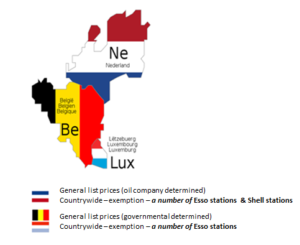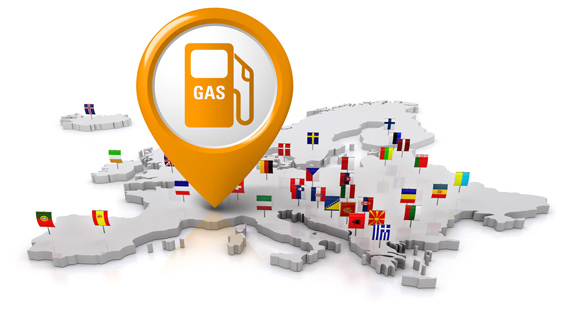If you would like to read this article in Dutch, click , for French click here.
Terms we regularly hear within the Benelux are: list prices and pump prices. What, however, is the actual difference between them? Is one lower than the other? Does it concern negotiated prices? Where do we find which variant?
Customers often ask us about these terms. The aim of this article is to clarify what these terms mean and why they are being maintained. Fuel prices depend on many different circumstances such as location and even time; therefore the prices applied by DKV depend on these factors as well.
Pump prices
In everyday language, pump prices are the prices displayed at the fuel station. These prices are based on list prices, and they vary per region, fuel station location and the franchisee. In several countries, additional costs may be applied on top of the pump price.
List prices
List prices are in fact recommended retail prices. They originate from official advice issued by the authorities or the oil companies to the fuel stations. In the Benelux countries for instance most fuel stations apply official list prices (except most Esso Benelux and Shell Netherlands). Pump prices are applied almost everywhere in the rest of Europe, here Total stations are exceptions: they may apply list prices. In The Netherlands the list prices are determined by the oil companies, whereas in Belgium and Luxemburg they are determined by the government.
Because fuels like petrol, diesel and LPG harm the environment, the government may levy duties on their use. Another price-determining factor is the market, which varies per country. It is also possible for certain prices to be prescribed to selected fuel stations only. As a result, price-settings and terms of applicability may vary between markets, and list prices may in fact not be equal to the prices displayed at the pump.
Follow this link to see what the current list- and pump prices within the Benelux are right now.

Legislation
The Benelux countries impose legislation on fuel sales, which may affect list prices. Here, fuel prices are structured in 5 steps, ranging from phase 1, the crude oil product, to ultimately the price applied by the fuel station, phase 5. Where refinery and transport costs do not constitute a great impact, it is the duties imposed that causes prices to rocket. For example the rate for the Netherlands is set at 44%, plus another 21% in VAT. It is therefore taxes that account for the largest part of the definitive fuel price.
Benefits for DKV customers
DKV Euro Service prefers to take an extra step to enable its clients to operate in a cost-efficient way by supporting their cost management. Fuelling with DKV implies a range of advantages, such as:
- A global network of more than 100,000 affiliated service stations;
- Simple refunding of VAT by way of DKV invoicing;
- Low user costs based on service fees;
- An efficient, transparent overview of all costs, specified in one and the same DKV invoice.
- A motivated back office that is ready to assist you in case of questions or problems.
Just consult our website for a complete overview and more information about the services provided by DKV.
Terms we regularly hear within the Benelux are: list prices and pump prices. What, however, is the actual difference between them? Is one lower than the other? Does it concern negotiated prices? Where do we find which variant?
Customers often ask us about these terms. Our aim is to clarify what these terms mean, so that you as a customer know what to expect. On our website: www.dkv-euroservice.com, you will be able to find a short explanatory article on the strategies.
 DKV BeNeLux You drive, we care
DKV BeNeLux You drive, we care

Economisch nieuws of Olie prijzen.
Ik begrijp uw reactie niet helemaal was u op zoek naar meer informatie? Als ik ergens bij kan helpen of al het niet duidelijk is dan hoor ik dat graag!